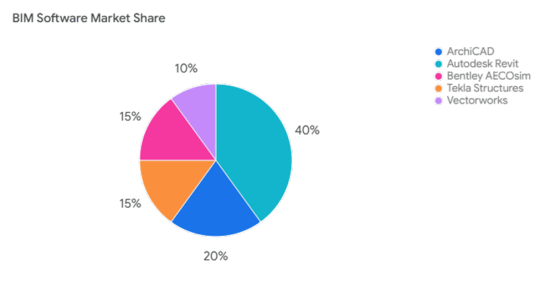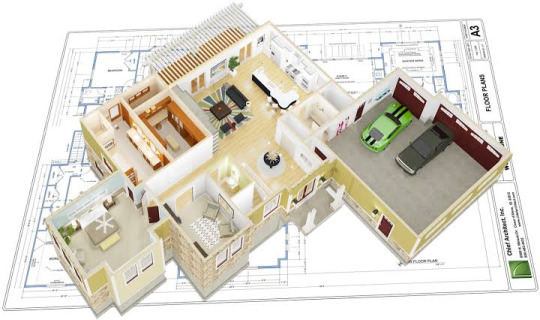#BIM software
Explore tagged Tumblr posts
Text
Power Up Your Projects with Cutting-Edge BIM Software
Looking to elevate your construction or design workflow? Autonomationoffers advanced BIM Software solutions that streamline every stage of your project — from concept to completion. Improve collaboration, reduce errors, and make smarter decisions with tools designed for modern building professionals. Digital transformation starts here.
0 notes
Text
#revit bim software#bim software#building design#autocad#navisworks#tekla#bim software list#building information modeling services
0 notes
Text
How BIM Software Improves Project Efficiency & Reduces Costs
Building Information Modeling (BIM) software has transformed the architecture, engineering, and construction (AEC) industries. With its ability to streamline design, collaboration, and project execution, BIM software has become an essential tool for modern construction professionals.
What is BIM Software?
BIM software is a digital platform that enables architects, engineers, and construction professionals to create and manage 3D models of buildings and infrastructure. Unlike traditional 2D drawings, BIM provides a detailed, data-rich model that integrates geometry, spatial relationships, and material properties.
Key Features of BIM Software:
3D Modeling & Visualization – Allows for accurate and realistic project representations.
Clash Detection – Identifies conflicts between different building systems before construction begins.
Collaboration Tools – Enables multiple stakeholders to work on the same project in real-time.
Cost Estimation – Automates material takeoffs and budgeting.
Sustainability Analysis – Helps optimize energy efficiency and reduce environmental impact.
Benefits of Using BIM Software:
Improved Accuracy: Reduces errors and rework by providing detailed project visualization.
Enhanced Collaboration: Ensures seamless coordination among architects, engineers, and contractors.
Cost Efficiency: Optimizes material usage and reduces waste.
Time Savings: Accelerates project timelines through automated workflows.
Regulatory Compliance: Helps meet industry standards and legal requirements.
Top BIM Software Solutions:

BIM Software Usage Distribution:
Below is a pie chart representing the market share of different BIM software solutions:


How to Choose the Right BIM Software?
When selecting a BIM software, consider:
Project Requirements – Identify the complexity and scope of your projects.
Ease of Use – Ensure the software is user-friendly and supports collaboration.
Integration Capabilities – Check compatibility with existing tools and workflows.
Budget – Compare pricing models and licensing options.
Conclusion:
BIM software is a game-changer for the construction industry, enhancing efficiency, collaboration, and sustainability. Whether you're an architect, engineer, or contractor, investing in the right BIM tool can significantly improve project outcomes.
0 notes
Text
Know how using Building Information Modeling (BIM) Software to accelerate the design process by maintaining constant communication and collaboration.
#Building Information Modeling Software#Building Information Modeling#BIM#Engineering Firms#BIM Software#BIM Software Development Company#Software Development Company#Software Development#BIM Software Development Services
0 notes
Text
Top 5 Home Design and Construction Software
The home design and construction industry has evolved significantly with the advent of technology, leading to the development of sophisticated software tools that enhance design processes, improve collaboration, and streamline project management. Here, we explore the top five home design and construction software options available today, highlighting their features, benefits, and suitability for…

View On WordPress
#3D modeling software#Archicad review#architectural design tools#architectural visualization software#AutoCAD for architects#best home design software#BIM software#CAD software#Chief Architect features#collaborative design tools#construction project management tools#construction software#home design applications#home design software#interior design software#residential design software#Revit alternatives#SketchUp benefits
0 notes
Text
In the ever-evolving landscape of airport infrastructure development, staying ahead of the curve is paramount. Building Information Modeling (BIM) emerges as a true game-changer, revolutionizing the way we plan, design, and construct airports.
Understanding BIM in the Airport Context
Defining BIM for Airports
BIM, in essence, is a sophisticated process that involves creating and managing digital representations of the physical and functional characteristics of a facility. When applied to airport development, this technology becomes a potent tool for architects, engineers, and project managers alike.
Enhancing Collaboration and Communication
One of the standout features of BIM in airport projects is its ability to foster collaboration among multidisciplinary teams. The seamless sharing of information ensures that all stakeholders are on the same page, minimizing misunderstandings and optimizing decision-making processes.
The Impact of BIM on Airport Design
Optimizing Spatial Planning
BIM empowers architects to optimize spatial planning with unparalleled precision. The three-dimensional modeling capabilities enable them to visualize and fine-tune every aspect of the airport layout, from runways and taxiways to terminals and lounges.
Read more
0 notes
Text
Announcing enhanced construction team management to empower field teams
In the construction industry, effective team management plays a crucial role in project success. However, managing teams in the dynamic and demanding construction field comes with its own set of challenges and requires team management software
From coordinating multiple tasks to ensuring smooth communication, construction project managers face numerous obstacles. This article will delve into the challenges of team management in the construction field, highlight the benefits of effective team management, and showcase how iFieldSmart Technologies' team management software can revolutionize the construction industry.

Challenges of Team Management in the Construction Field:
Communication and Collaboration: Construction projects involve numerous stakeholders, including architects, engineers, contractors, and subcontractors. Ensuring effective communication and collaboration among these diverse teams can be challenging, leading to delays, errors, and misunderstandings.
Task Coordination: Construction projects involve a multitude of tasks that need to be coordinated seamlessly. Managing various construction activities, such as excavation, foundation, electrical work, plumbing, and finishing, requires careful planning and efficient coordination to avoid delays and cost overruns.
Resource Management: Construction projects involve the allocation and tracking of resources such as manpower, equipment, and materials. Inefficient resource management can lead to underutilization or shortages, impacting project timelines and costs.
Safety Compliance: Construction sites are inherently risky environments. Ensuring the safety of workers, compliance with regulations, and proper documentation can be complex and time-consuming. Inadequate safety measures can result in accidents, legal issues, and reputational damage.
Benefits of Effective Team Management in the Construction Field:
Improved Communication: Effective team management fosters clear and timely communication, ensuring that all stakeholders are on the same page. Enhanced communication reduces misunderstandings, minimizes rework, and speeds up decision-making, leading to improved project outcomes.
Streamlined Coordination: Efficient coordination among teams facilitates smooth project execution. When tasks are well-coordinated, productivity increases and potential bottlenecks are identified and addressed promptly, resulting in faster project completion.
Optimal Resource Utilization: Effective team management software enables optimized resource allocation, ensuring that labor, equipment, and materials are utilized efficiently. By avoiding resource shortages and preventing overstaffing, construction projects can be completed within budget and on time.
Enhanced Safety: A strong team management approach prioritizes safety protocols and compliance. By promoting a safety-first culture, construction teams can minimize accidents, reduce insurance costs, and uphold their reputation as responsible and reliable industry players.
Best Practices for Construction Team Management:
Effective team management is a critical component of successful construction projects. To ensure smooth operations, maximize productivity, and achieve project objectives, construction project managers should implement the following best practices:
Clear Communication: Establish open and transparent communication channels among team members and stakeholders. Clearly define roles, responsibilities, and expectations, and encourage regular and proactive communication. Utilize both formal (meetings, reports, emails) and informal (project management software, instant messaging) communication methods to ensure everyone is informed and aligned.
Team Building and Collaboration: Foster a collaborative and positive team culture. Encourage teamwork, mutual respect, and trust among team members. Promote cross-functional collaboration and create opportunities for team-building activities, such as team meetings, training sessions, and social events. Effective collaboration enhances problem-solving abilities and strengthens relationships within the team.
Clear Goals and Objectives: Set clear, measurable, and achievable project goals and objectives. Ensure that all team members understand and align with these goals. Break down larger objectives into smaller, manageable tasks and establish realistic timelines and milestones. Communicate the project vision to motivate and engage the team toward shared success.
Effective Leadership: Strong leadership is vital for construction team management. Project managers should possess excellent leadership skills, including the ability to delegate tasks, provide guidance and support, and make informed decisions. Lead by example, inspire the team, and create a positive work environment that encourages innovation, growth, and continuous improvement.
Resource Management: Efficiently allocate and manage resources to optimize productivity and minimize waste. Develop a comprehensive resource management plan that includes manpower, equipment, and materials. Regularly monitor resource usage, track inventory levels, and implement measures to prevent shortages or over utilization. Effective resource management helps maintain project schedules and control costs.
Risk Management: Identify potential risks and develop a comprehensive risk management plan. Assess project risks regularly and implement strategies to mitigate and minimize their impact. Encourage team members to report potential risks and create a culture of proactive risk management. Regularly review and update the risk management plan as the project progresses.
Technology Adoption: Leverage technology and construction management software to streamline operations, enhance communication, and improve efficiency. Utilize project management software, collaboration tools, and mobile applications to facilitate real-time communication, task tracking, document sharing, and reporting. Embrace emerging technologies such as Building Information Modeling (BIM) and the Internet of Things (IoT) to enhance project planning, execution, and monitoring.
Continuous Learning and Improvement: Encourage a culture of continuous learning and improvement within the team. Conduct regular project reviews to identify successes, challenges, and lessons learned. Share best practices and knowledge gained from previous projects. Encourage professional development through training, certifications, and industry conferences. Embrace feedback and implement improvements based on lessons learned to enhance future project outcomes.
Safety First: Prioritize safety throughout the construction project. Implement comprehensive safety protocols, provide proper training, and enforce strict compliance with safety regulations. Conduct regular safety inspections, identify potential hazards, and promptly address any safety concerns. Foster a culture of safety consciousness and empower team members to take ownership of safety practices.
By implementing these best practices, construction project managers can effectively manage their teams, optimize project performance, and achieve successful outcomes. Clear communication, collaboration, goal-setting, leadership, resource management, risk management, technology adoption, continuous learning, and safety considerations are all key factors in ensuring efficient and productive construction team management.
iFieldSmart Technologies: Revolutionizing Construction Team Management:
iFieldSmart Technologies offers cutting-edge team management software specifically designed for the construction industry. This software empowers construction project managers with advanced features to overcome the challenges of team management and achieve higher productivity, faster project completion, and reduced costs.
Key Features of iFieldSmart Technologies' Team Management Software:
Real-time Collaboration: The software provides a centralized platform where all stakeholders can collaborate in real-time, exchanging information, documents, and updates. This ensures seamless communication and eliminates information silos.
Task and Schedule Management: The software enables efficient task allocation, tracking, and scheduling. Project managers can assign tasks, monitor progress, and adjust schedules, ensuring that teams stay on track and meet project milestones.
Resource Planning and Tracking: The software facilitates comprehensive resource management, enabling project managers to allocate and track manpower, equipment, and materials. This ensures optimal resource utilization and minimizes wastage and delays.
Safety and Compliance Management: iFieldSmart's software incorporates safety management modules that streamline safety inspections, incident reporting, and compliance documentation. This helps construction teams create a safe working environment while complying with industry regulations.
Conclusion:
Effective team management is crucial for success in the construction industry. By addressing the challenges associated with communication, coordination, and resource management, and emphasizing safety compliance, construction projects can achieve higher productivity, faster completion, and reduced costs. iFieldSmart Technologies' team management software offers a comprehensive solution to these challenges, empowering construction project managers with advanced features to streamline operations and enhance project outcomes.
With iFieldSmart's team management software, construction project managers can benefit from real-time collaboration, enabling seamless communication and information exchange among all stakeholders. This eliminates the delays and misunderstandings that often plague construction projects, leading to improved efficiency and productivity.
The software's task and schedule management features enable project managers to assign tasks, track progress, and adjust schedules as needed. This ensures that teams stay on schedule and meet project milestones, avoiding costly delays and ensuring timely project completion.
Efficient resource planning and tracking are essential for successful construction projects, and iFieldSmart's software offers robust resource management capabilities. Project managers can allocate manpower, equipment, and materials effectively, optimizing resource utilization and minimizing wastage. This not only enhances productivity but also helps control costs, ensuring projects are completed within budget.
Safety is paramount in the construction industry, and iFieldSmart's team management software incorporates modules specifically designed to manage safety and compliance. The software streamlines safety inspections, incident reporting, and compliance documentation, enabling construction teams to prioritize and maintain a safe working environment. By reducing the risk of accidents, construction companies can protect their workers, minimize insurance costs, and safeguard their reputations.
Furthermore, iFieldSmart's team management software provides valuable analytics and reporting capabilities, allowing project managers to gain insights into project performance, identify areas for improvement, and make data-driven decisions. This promotes continuous improvement and helps optimize future projects based on lessons learned.
In conclusion, effective team management is crucial for overcoming the challenges inherent in the construction field. iFieldSmart Technologies' team management software revolutionizes construction project management by addressing communication, coordination, resource management, and safety compliance challenges. By leveraging the software's advanced features, construction project managers can enhance collaboration, streamline operations, optimize resource utilization, and ensure a safe working environment. Ultimately, iFieldSmart's team management software enables construction companies to achieve higher productivity, faster project completion, and reduced costs, positioning them for success in the competitive construction industry.
For more information: +1 (844) 358-0400
Visit us: - https://www.ifieldsmart.com/
#construction management software#team management software#construction management#construction project management#construction project management software#bim software
0 notes
Text
What is digital construction?
Digital construction is the application of data technology in the construction process to inform all aspects of a project from design to turnover. Building Information Modelling (BIM) is one of the most powerful digital tools that benefits every phase of the project lifecycle, including estimating, materials and labour management.

Are You Game To Save on Cost and Time overruns?
Connect workflows, teams, and data at every stage of construction. Bring every project team together from design to turnover on a single construction management software solution. Connect workflows and collaborate securely from a single source of truth.
Contact Us
#Digital Construction Platform#digital construction#aec#Digital construction#CAD#BIM#bim services#bim software#bim modeling services#bim consulting services#revit#bimservices
0 notes
Text
Power Up Your Projects with Cutting-Edge BIM Software
Looking to elevate your construction or design workflow? Autonomation offers advanced BIM Software solutions that streamline every stage of your project — from concept to completion. Improve collaboration, reduce errors, and make smarter decisions with tools designed for modern building professionals. Digital transformation starts here.
0 notes
Text

At Cosmere Technologies, we have the right BIM software to offer the best BIM services. If you have any questions, you can contact experts at Cosmere Technologies.
0 notes
Text

How BIM Software is Reshaping the Future of Building Design
BIM software is transforming building design by enabling smarter planning, real-time collaboration, and data-driven decision-making. It enhances accuracy, reduces errors, and improves efficiency, making construction faster and more cost-effective.
0 notes
Text
Efficiency at Your Fingertips: Unveiling the Top 5 BIM Software for Civil Engineers

Introduction
In the fast-paced world of civil engineering, staying ahead of the competition requires leveraging the latest technological advancements. Building Information Modeling (BIM) has revolutionized the construction industry by enabling efficient collaboration, precise planning, and accurate design visualization. In this blog post, we will explore the best BIM software for civil engineers, empowering them to streamline their projects and achieve unparalleled efficiency.
1. Autodesk Revit:
As one of the most popular BIM software platforms, Autodesk Revit offers a comprehensive set of tools for civil engineers. Its intuitive interface and powerful features make it an excellent choice for designing and analyzing complex building structures. Revit enables professionals to create detailed 3D models, generate accurate documentation, and perform simulations to evaluate the structural integrity and performance of their designs. Its interoperability with other Autodesk software and extensive library of building components make it an industry standard for BIM.
2. Autodesk Civil 3D:
Specifically designed for civil engineering and infrastructure projects, Autodesk Civil 3D is a comprehensive BIM software that combines design, analysis, and documentation capabilities. Civil 3D enables engineers to create dynamic 3D models of roads, highways, land developments, and more. The software offers powerful tools for grading, drainage, and utility design, streamlining the design process and facilitating better decision-making. Civil 3D also integrates with other Autodesk applications, enhancing collaboration across different disciplines.
3. Graphisoft ArchiCAD:
ArchiCAD offers a comprehensive BIM solution for civil engineers, focusing on architectural design and documentation. It provides a user-friendly interface and advanced modeling tools that facilitate the creation of intricate building designs. ArchiCAD's intelligent object-based approach streamlines the design process by automating repetitive tasks and generating accurate documentation. With its robust collaboration capabilities and smooth interoperability, ArchiCAD empowers civil engineers to efficiently manage projects from concept to completion.
4. Navisworks
Navisworks is a comprehensive software application developed by Autodesk, designed specifically for project review, coordination, and simulation in the field of architecture, engineering, and construction (AEC). It enables professionals to integrate and analyze data from various sources to enhance collaboration and streamline the construction process.
5. SketchUp
SketchUp is a widely-used 3D modeling software developed by Trimble Inc. Known for its intuitive and user-friendly interface, SketchUp is popular among architects, designers, and creatives for creating, visualizing, and presenting 3D models. SketchUp provides a wide range of design tools and features to create detailed and intricate 3D models. Users can draw and modify shapes, apply textures and materials, add lighting and shadows, and insert pre-built components from an extensive 3D Warehouse. These capabilities empower designers to bring their creative visions to life, whether it's architectural designs, interior layouts, product prototypes, or urban landscapes.
Conclusion
In the ever-evolving world of civil engineering, adopting the right BIM software is crucial to maximize productivity, improve collaboration, and enhance project outcomes. The software options mentioned above, including Autodesk Revit, Autodesk Civil 3D, Graphisoft ArchiCAD, Navisworks and SketchUp, provide powerful tools tailored to the needs of civil engineers. Each software has its unique strengths and capabilities, catering to various disciplines within civil engineering. By leveraging these advanced BIM solutions, civil engineers can streamline their workflows, reduce errors, and deliver exceptional results in today's dynamic construction industry.
0 notes
Text
Best BIM Tools in 2025 and Selecting the Right BIM Software

BIM is a comprehensive approach in the AEC realm, and its applications and tools hold a significant position. It is vital to choose the right BIM software for project requirements, coordination, and efficiency. Here’s a detailed, curated list of the best BIM software and key factors for selecting it.
#bim modeling services#3d bim services#mep shop drawings#building information modeling#interior visualization#clash detection#revit families creation#3d cad drawings#shop drawing services#bim company#top bim software#best bim tools
2 notes
·
View notes
Text
Exploring the Diverse Landscape of BIM Software in Construction: A Comprehensive Guide
Introduction: In the ever-evolving field of construction, Building Information Modeling (BIM) has emerged as a transformative technology that revolutionizes the way buildings are designed, constructed, and managed. BIM software plays a pivotal role in enhancing collaboration, improving efficiency, and minimizing errors throughout the construction process. This article delves into the various…

View On WordPress
#architectural design software#as-built documentation#BIM model accuracy#BIM software#Building Information Modeling#collaboration platforms#construction industry advancements#construction management software#construction project efficiency#Construction Technology#cost estimation tools#facility maintenance optimization#facility management solutions#laser scanning technology#LiDAR applications#MEP systems modeling#point cloud integration#project stakeholders collaboration#real-time coordination#structural engineering tools#sustainable building practices
0 notes
Text
someone needs to add the ability to add doors to curtain systems in revit I am going insane in the membrane over the brokenness of the curtain system what am I supposed to do?? Just lay down and die??
revit why
whyyyyyyyy
For anyone wondering I just did a door opening and then put a brick wall outside the curtain system so I can add the door and the door opening allows me to have a door that actually leads outside, it doesn’t look bad but why the fuck is it impossible to put doors on curtain systems???
Why should I have to make a whole separate mass or even void mass when we could just allow the fucking doors in curtain systems????
honestly in general the curtain system is just fucked, why is it so broken???
do they not have play testers or something??? I’ve encountered like 50 separate issues and glitches in 2024 and 2025 and you’d think it wouldn’t be so crazy but like every time I livestream it in 2025 it starts flashing and strobing??? Like the fuck how???
I’d complain so so much but the autodesk website is too confusing.
BOOOO
#-pop#Revit#revit bim modeling#fuck autodesk those bitches better add accessibility features or I will riot#archicad wouldn’t do this to me#Literally why the fuck can’t you change the text size auto desk??? RIDDLE MY PISS AUTODESK WHY CANT I CHANGE THE FUCKING TEXT SIZE???#HUH??? PLEASE I WOULD KILL FOR LIKE TINY NOISES THAT TELL ME SOMETHING IS CONNECTED#like please hire a disabled person to design your fucking software#it’s so extremely inaccessible and people pay fuck 11 thousand dollars a year for this shit like come the fuck on???#Begrudgingly I know how to use revit and autocad but like fucking hell autodesk fix your fucking program I can’t have the fucking-#project manager and properties window open at the same time I’m 2025???#LITERALLy WHY IT WORKS IN 2024??
7 notes
·
View notes
Text
Announcing enhanced construction team management to empower field teams: Top reasons iFieldSmart Technologies leads the way
In the construction industry, effective team management plays a crucial role in project success. However, managing teams in the dynamic and demanding construction field comes with its own set of challenges and requires team management software
From coordinating multiple tasks to ensuring smooth communication, construction project managers face numerous obstacles. This article will delve into the challenges of team management in the construction field, highlight the benefits of effective team management, and showcase how iFieldSmart Technologies' team management software can revolutionize the construction industry.

Challenges of Team Management in the Construction Field:
Communication and Collaboration: Construction projects involve numerous stakeholders, including architects, engineers, contractors, and subcontractors. Ensuring effective communication and collaboration among these diverse teams can be challenging, leading to delays, errors, and misunderstandings.
Task Coordination: Construction projects involve a multitude of tasks that need to be coordinated seamlessly. Managing various construction activities, such as excavation, foundation, electrical work, plumbing, and finishing, requires careful planning and efficient coordination to avoid delays and cost overruns.
Resource Management: Construction projects involve the allocation and tracking of resources such as manpower, equipment, and materials. Inefficient resource management can lead to underutilization or shortages, impacting project timelines and costs.
Safety Compliance: Construction sites are inherently risky environments. Ensuring the safety of workers, compliance with regulations, and proper documentation can be complex and time-consuming. Inadequate safety measures can result in accidents, legal issues, and reputational damage.
Benefits of Effective Team Management in the Construction Field:
Improved Communication: Effective team management fosters clear and timely communication, ensuring that all stakeholders are on the same page. Enhanced communication reduces misunderstandings, minimizes rework, and speeds up decision-making, leading to improved project outcomes.
Streamlined Coordination: Efficient coordination among teams facilitates smooth project execution. When tasks are well-coordinated, productivity increases and potential bottlenecks are identified and addressed promptly, resulting in faster project completion.
Optimal Resource Utilization: Effective team management software enables optimized resource allocation, ensuring that labor, equipment, and materials are utilized efficiently. By avoiding resource shortages and preventing overstaffing, construction projects can be completed within budget and on time.
Enhanced Safety: A strong team management approach prioritizes safety protocols and compliance. By promoting a safety-first culture, construction teams can minimize accidents, reduce insurance costs, and uphold their reputation as responsible and reliable industry players.
Best Practices for Construction Team Management:
Effective team management is a critical component of successful construction projects. To ensure smooth operations, maximize productivity, and achieve project objectives, construction project managers should implement the following best practices:
Clear Communication: Establish open and transparent communication channels among team members and stakeholders. Clearly define roles, responsibilities, and expectations, and encourage regular and proactive communication. Utilize both formal (meetings, reports, emails) and informal (project management software, instant messaging) communication methods to ensure everyone is informed and aligned.
Team Building and Collaboration: Foster a collaborative and positive team culture. Encourage teamwork, mutual respect, and trust among team members. Promote cross-functional collaboration and create opportunities for team-building activities, such as team meetings, training sessions, and social events. Effective collaboration enhances problem-solving abilities and strengthens relationships within the team.
Clear Goals and Objectives: Set clear, measurable, and achievable project goals and objectives. Ensure that all team members understand and align with these goals. Break down larger objectives into smaller, manageable tasks and establish realistic timelines and milestones. Communicate the project vision to motivate and engage the team toward shared success.
Effective Leadership: Strong leadership is vital for construction team management. Project managers should possess excellent leadership skills, including the ability to delegate tasks, provide guidance and support, and make informed decisions. Lead by example, inspire the team, and create a positive work environment that encourages innovation, growth, and continuous improvement.
Resource Management: Efficiently allocate and manage resources to optimize productivity and minimize waste. Develop a comprehensive resource management plan that includes manpower, equipment, and materials. Regularly monitor resource usage, track inventory levels, and implement measures to prevent shortages or over utilization. Effective resource management helps maintain project schedules and control costs.
Risk Management: Identify potential risks and develop a comprehensive risk management plan. Assess project risks regularly and implement strategies to mitigate and minimize their impact. Encourage team members to report potential risks and create a culture of proactive risk management. Regularly review and update the risk management plan as the project progresses.
Technology Adoption: Leverage technology and construction management software to streamline operations, enhance communication, and improve efficiency. Utilize project management software, collaboration tools, and mobile applications to facilitate real-time communication, task tracking, document sharing, and reporting. Embrace emerging technologies such as Building Information Modeling (BIM) and the Internet of Things (IoT) to enhance project planning, execution, and monitoring.
Continuous Learning and Improvement: Encourage a culture of continuous learning and improvement within the team. Conduct regular project reviews to identify successes, challenges, and lessons learned. Share best practices and knowledge gained from previous projects. Encourage professional development through training, certifications, and industry conferences. Embrace feedback and implement improvements based on lessons learned to enhance future project outcomes.
Safety First: Prioritize safety throughout the construction project. Implement comprehensive safety protocols, provide proper training, and enforce strict compliance with safety regulations. Conduct regular safety inspections, identify potential hazards, and promptly address any safety concerns. Foster a culture of safety consciousness and empower team members to take ownership of safety practices.
By implementing these best practices, construction project managers can effectively manage their teams, optimize project performance, and achieve successful outcomes. Clear communication, collaboration, goal-setting, leadership, resource management, risk management, technology adoption, continuous learning, and safety considerations are all key factors in ensuring efficient and productive construction team management.
iFieldSmart Technologies: Revolutionizing Construction Team Management:
iFieldSmart Technologies offers cutting-edge team management software specifically designed for the construction industry. This software empowers construction project managers with advanced features to overcome the challenges of team management and achieve higher productivity, faster project completion, and reduced costs.
Key Features of iFieldSmart Technologies' Team Management Software:
Real-time Collaboration: The software provides a centralized platform where all stakeholders can collaborate in real-time, exchanging information, documents, and updates. This ensures seamless communication and eliminates information silos.
Task and Schedule Management: The software enables efficient task allocation, tracking, and scheduling. Project managers can assign tasks, monitor progress, and adjust schedules, ensuring that teams stay on track and meet project milestones.
Resource Planning and Tracking: The software facilitates comprehensive resource management, enabling project managers to allocate and track manpower, equipment, and materials. This ensures optimal resource utilization and minimizes wastage and delays.
Safety and Compliance Management: iFieldSmart's software incorporates safety management modules that streamline safety inspections, incident reporting, and compliance documentation. This helps construction teams create a safe working environment while complying with industry regulations.
Conclusion:
Effective team management is crucial for success in the construction industry. By addressing the challenges associated with communication, coordination, and resource management, and emphasizing safety compliance, construction projects can achieve higher productivity, faster completion, and reduced costs. iFieldSmart Technologies' team management software offers a comprehensive solution to these challenges, empowering construction project managers with advanced features to streamline operations and enhance project outcomes.
With iFieldSmart's team management software, construction project managers can benefit from real-time collaboration, enabling seamless communication and information exchange among all stakeholders. This eliminates the delays and misunderstandings that often plague construction projects, leading to improved efficiency and productivity.
The software's task and schedule management features enable project managers to assign tasks, track progress, and adjust schedules as needed. This ensures that teams stay on schedule and meet project milestones, avoiding costly delays and ensuring timely project completion.
Efficient resource planning and tracking are essential for successful construction projects, and iFieldSmart's software offers robust resource management capabilities. Project managers can allocate manpower, equipment, and materials effectively, optimizing resource utilization and minimizing wastage. This not only enhances productivity but also helps control costs, ensuring projects are completed within budget.
Safety is paramount in the construction industry, and iFieldSmart's team management software incorporates modules specifically designed to manage safety and compliance. The software streamlines safety inspections, incident reporting, and compliance documentation, enabling construction teams to prioritize and maintain a safe working environment. By reducing the risk of accidents, construction companies can protect their workers, minimize insurance costs, and safeguard their reputations.
Furthermore, iFieldSmart's team management software provides valuable analytics and reporting capabilities, allowing project managers to gain insights into project performance, identify areas for improvement, and make data-driven decisions. This promotes continuous improvement and helps optimize future projects based on lessons learned.
In conclusion, effective team management is crucial for overcoming the challenges inherent in the construction field. iFieldSmart Technologies' team management software revolutionizes construction project management by addressing communication, coordination, resource management, and safety compliance challenges. By leveraging the software's advanced features, construction project managers can enhance collaboration, streamline operations, optimize resource utilization, and ensure a safe working environment. Ultimately, iFieldSmart's team management software enables construction companies to achieve higher productivity, faster project completion, and reduced costs, positioning them for success in the competitive construction industry.
For more information: +1 (844) 358-0400
Visit us: - https://www.ifieldsmart.com/
#construction management software#construction project management#team management software#bim software
0 notes